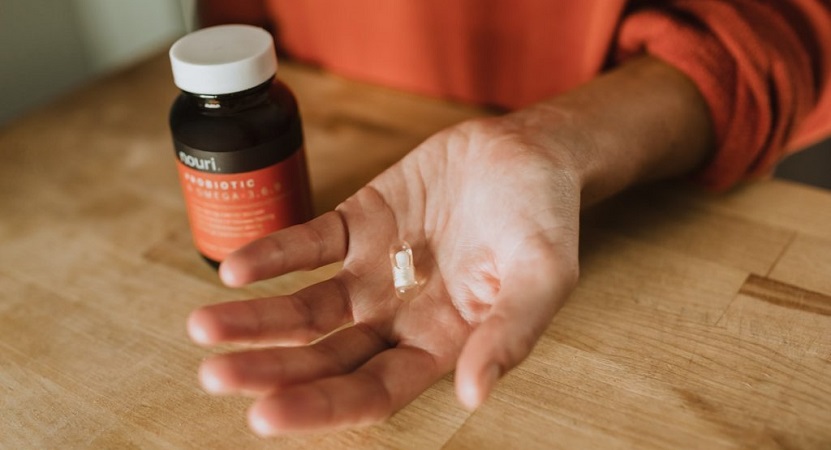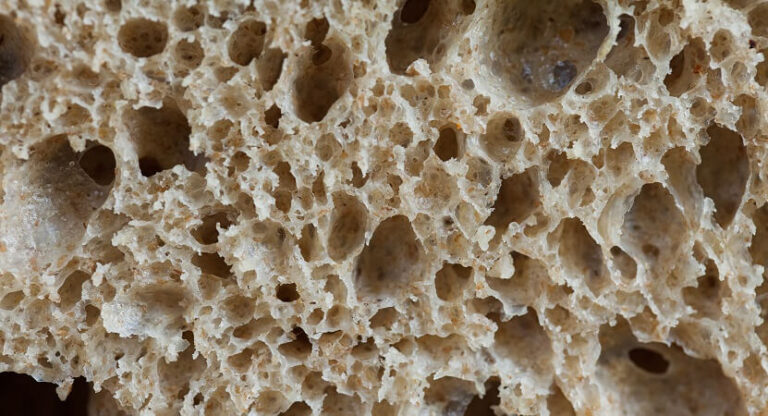Vaginal probiotics may be a largely taboo subject out in the world, but we’d like to invite you to our safe space in which things like this are explored freely. If there is anything you’re unsure of when it comes to this topic, read on and we’re confident we’ll cover it!
In this article we discuss the following:
- Probiotics for Vaginal Health
- How to Take Vaginal Probiotics
- Probiotics Brands
- Best Probiotics for Vaginal Health
- Where to Get Vaginal Probiotics
Probiotics for Vaginal Health
As we know, probiotics are responsible for repopulating and rebalancing “good” bacterial colonies in different parts of the body. Different probiotic strains can target different problems, such as gut imbalance and even vaginal health concerns.
Treating vaginal concerns is possible through two very specific probiotic strains, both of which Shakeel Malik (researcher and blogger) was able to give us deeper insight into. “Lactobacillus is a type of bacteria that thrives on sugars like glucose and fructose, producing lactic acid as a byproduct. Lactic acid is what gives fermented food their sour taste—think pickles or yogurt!”
A lot of people don’t know that this naturally occurring substance helps keep the vagina’s delicate pH balance at around 4 to maintain normal discharge patterns throughout the month without causing irritation or itching. “Lactobacilli also produces hydrogen peroxide—a natural infection fighter that can neutralize harmful pathogens before they cause any damage!” adds Malik.
Now, let’s talk about yeast.
A healthy vagina contains a delicate balance of both lactobacilli and yeast; however, any disruption in this balance can tip the scales towards an overgrowth of yeast. That’s where probiotics come in! “Studies show that certain types of lactobacilli like D-Lactate and L-Lactic can produce beneficial enzymes and other substances that keep yeast at bay. That’s why if you’re suffering from a yeast infection, your doctor may prescribe oral probiotics to fight the overgrowth of Candida albicans fungus,” says Malik.
Probiotics for Bacterial Vaginosis
What is BV and do you perhaps suffer from it? Imagine bacterial vaginosis as a condition in which the vagina becomes noticeably inflamed, and this inflammation is caused by a very specific overgrowth of bacteria that is actually very natural to the vaginal ecosystem. When it is out of balance and overgrowth is occurring, the vagina is visibly unsettled.
BV can affect women of all ages, however onset of this condition is more likely in women who are in their reproductive prime. Taking probiotics for vaginal health can both prevent and/or treat BV.
Dr. Barbara A. Hannah (M.D., M.S., FACOG) expands on this to give us a more multidimensional understanding. “There are millions of bacteria within the human body including the GI tract, the skin, the respiratory tract as well as the vagina. The human vagina is teeming with dozens of species of bacteria…some beneficial and some harmful.”
She goes on to explain how various conditions can reduce the number of beneficial bacteria in the vagina including antibiotic usage, sexual intercourse, menstruation and douching. “With this reduction in beneficial bacteria, pathological bacteria can exponentially reproduce causing infection. The most common vaginal infection, bacterial vaginosis occurs as a result of the decrease in Lactobacilli (good bacteria) and the increase in anaerobic bacteria (bad bacteria),” says Dr. Hannah.
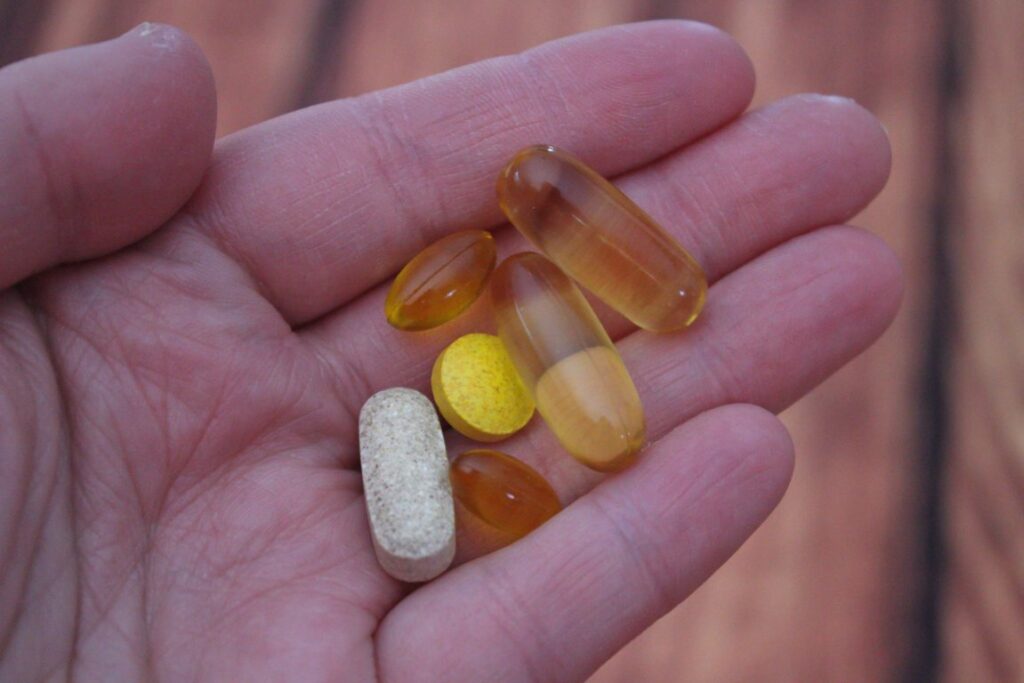
“Oral probiotics have been shown to be effective in increasing the beneficial bacteria in the gut and possibly in the vagina, however the vaginal probiotics have not shown the same. Research regarding the benefit of vaginal probiotics is limited. At this time, I still offer oral probiotics to my patients with bacterial vaginosis because there is research that has shown efficacy, however I do not recommend vaginal probiotics at this time,” she adds.
How Long does it Take for Probiotics to Work for BV
So the big question is, can probiotics cure BV? As mentioned above, is it entirely possible to both treat and prevent BV with a daily dose of very specific probiotic strains. For some, complete eradication of the condition is possible, while others may only experience a mild to significant reduction in symptoms.
At this time, there is no concrete window within which one can expect a probiotic to work against a condition such as BV. Some patients report improvement in as little as 6 days, while others note that it took them up to two months to experience notable changes.
Inserting Probiotics for BV
Vaginal probiotics come in different forms, some are the pills you swallow, and others are suppositories that need to be inserted into the vagina itself. The abilities and potency of the probiotic is not determined by the form in which it is delivered; some are simply better absorbed vaginally, while others thrive first in the gut and then make their way down to the vagina from there.
Using a vaginal probiotics suppository is as easy as using a tampon; if you’ve done one, you’ve done the other. In reading through some of the ‘inserting probiotics for BV’ reviews online, the resounding opinion of people worldwide is that there is nothing to fear, it is not painful, and that all one really needs to keep in mind is to wash hands thoroughly before and after the insertion.
Oral Probiotics for BV
Usually when we refer to ‘oral probiotics’, we are referring to pills that one can swallow daily for the purpose of bacterial colony repopulation. That said, oral probiotics is actually a much broader term that is used to refer to any probiotic that can be ingested through the mouth — this includes all edible forms of probiotics, such as yoghurts, kimchi, kefir, sauerkraut, miso, temphe, pickles and even some cheeses.
This list of orally consumable probiotic foods is extensive, as some are simply so rich in probiotic benefits they can actually impact pH levels in the body even if this wasn’t necessary your intention in eating them. Buttermilk, for example, is a probiotic rich substance that people consume in excess worldwide, and most have no idea of the benefits it brings to the bacterial colonies of the gut.
Probiotics Pills for BV
As mentioned above, vaginal probiotics can also be delivered to the internal system’s of the body in pill-form. Oral probiotics for BV are like any other type of daily probiotic you might swallow for the purpose of repopulating bacterial colonies, the only difference would be the specific strain that is used within the capsule.
Not all strains can help the vagina, just as not all strains can help the gut. This is very much an exact science, as bacteria within the human design is an incredibly sensitive and intricate ecosystem.
Probiotics for Yeast Infection
First things first, what do we mean when we refer to a yeast infection? This is a very different condition to that of BV, and it occurs due to a fungus called ‘candida’. All healthy vaginas contain a certain level of candida or yeast cells to keep things in working order, but when these cells start to overpopulate due to an interference within the vaginal ecosystem, they can cause a lot of damage.
When pondering do probiotics kill candida?, it helps to refer back to what Shakeel Malik presented to us earlier, “Studies show that certain types of [probiotic strains] can produce beneficial enzymes and other substances that keep yeast at bay.”
In a strange twist of events, however, can probiotics cause yeast infections? Surprisingly, this isn’t all that uncommon, and new studies are being conducted to try and determine why people with chronic illness and/or compromised immune systems have experienced bacterial or fungal infections as a result of consistent probiotic use.
How Fast do Probiotics Work for Yeast Infection
Because these probiotics literally have to repopulate the microbiota of the vagina, they can take anywhere from one to four weeks to show improvement. Your dosage of probiotics for yeast infection is best prescribed by the same person who diagnosed your candida in the first place, as they will know the severity of your condition even better than you can.
Something to note is that probiotics are not a viable option for all cases of candida. Sometimes, the spread and severity of the candida is too extensive and a “natural” probiotic approach isn’t going to suffice. Being a fungus, candida thrives due to spores that live within the vaginal walls, and come to life whenever there is something for them to eat. This usually means that they are overactive during menstruation, because the fluctuation in pH levels is providing ‘food’, and then once one’s period ends, the illusion of improvement is present (as though the probiotics are working). However, come the next menstruation cycle, the whole condition flares right back up and you’re back to square one.
Inserting Probiotics for Yeast Infection
Inserting applicator-style probiotics for yeast infections is the exact same process as those designed for BV. Again, if you’ve ever used a tampon, then you’re fully qualified to dose yourself with a probiotic suppository.
Some things to keep in mind:
- Clean hands and fingers are imperative when inserting something while suffering a yeast infection. Any bacteria on your person will simply feed the candida further, and lead to a slower recovery.
- Always use an applicator where available!
- It is easier to insert vaginal suppositories whilst laying flat on your back, knees up, and stomach totally relaxed. This opens up the canal and allows the medicine to go deeper.
- Suppository creams (topical probiotics) for candida will naturally fall out of you once you stand up and start moving around; this does not mean you’ve done something wrong, or that the probiotic is not going to work. See the next paragraph for more on topical probiotics.
Topical Probiotics for Yeast Infection
Some of the best probiotics for yeast infections/candida come in cream form, and are inserted using a hollow tube that doubles as an applicator. These types of probiotics are often a lot more potent, as they are usually combined with other medicines that can eradicate the spores that refuse to let the candida cycle subside.

Topical probiotics are one of the most effective ways to treat yeast infections, without having to swallow other medications or endure more invasive procedures.
Probiotics for Women’s pH Balance
There are some people who are not necessarily suffering from conditions like BV or candida, but who simply seek out more improved pH balances for their own body consciousness. Putting effort and focus on one’s pH levels is a sure way of preventing the onset of vaginal conditions in the future, and means better overall health and improved immunity.
As we know, one of the best probiotics for women’s health, lactobacillus, is completely harmless if taken even when there is no significant ailment present within the vaginal ecosystem. That said, there are some side effects that one can keep an eye out for when it comes to these probiotics in a causal setting.
Shakeel Malik, who we heard from earlier, offered some insight into the side effects that one might encounter along the way, which include cramps, nausea, headaches and diarrhea.
“Some people like to take probiotics topically as well, for example, applying yogurt or other forms of lactobacilli directly to the vagina. However, some women may experience an allergic reaction to these topical probiotics, so unless recommended by your doctor it’s best not to go this route,” added Malik.
In his opinion, if you’re looking for a way to naturally restore your flora and maintain healthy pH levels in the vagina, you may want to consider taking a vaginal probiotics supplement. “It’s important to remember that different kinds of lactobacilli produce different kinds of byproducts; what works for one woman may not necessarily work for another, so it’s best to try out several different oral or topical products until you find the one that works best for you!” says Malik.
Probiotics for Vaginal Odor
A sure sign of an imbalanced pH is that of vaginal odor. The two tend to go hand in hand, and this is one way that the body communicates to the individual that something is out of whack and that attention or improvement is needed. This may be in the form of a break in sexual activity, change to dietary choices or even switching to a new type of underwear fabric — when it comes to vaginal pH, there are literally hundreds of things that can affect the balance.
Probiotics for Thrush
When we refer to thrush, we are referring to candida or a yeast infection. These are interchangeable terms for the same condition. Feel free to refer back to our above section on probiotics for yeast Infection to recap what this involves.
Probiotics for Bacterial Infections
The body is a very delicate ecosystem in which there are many subsystems in place to ensure perfect functioning and balance. The body relies heavily on what are known as “good bacterias”, or microbiota, that keep things in good working order. Good bacterial colonies are found in the skin, throat, nose, mouth, vagina, and gut.
Sometimes, these colonies become compromised, which means that they are infiltrated with “bad bacteria” that start to eradicate the good, and thus causing complete disarray in the system to which they are related. Too much bad bacteria in the mouth, for example, will likely lead to cavities, mouth ulcers, or infections.
Probiotics are a sure way of treating the myriad of bacterial infections that can occur throughout the human body.
How to Take Vaginal Probiotics
First thing’s first, it’s usually best to not self-dose when it comes to taking probiotics for vaginal disorders. Doing so can be tempting, we know, but it really does make healing so much more efficient when someone in the field can prescribe the precise strain for your precise problem.
Your physician will prescribe either a topical, oral or suppository probiotic for your condition, as well as a suitable dosage and time window. You’ll then be responsible for following their instructions and dosing yourself (ideally around the same time each day).
We’ve found that oral probiotics are best taken first thing in the morning (while your stomach is empty and ready to receive healing), while topical and suppository-style probiotics are better to do in the evening when you are already laying down and preparing to go to sleep. It’s fine to do these during the day, just be prepared for quite a bit of leakage if you’re using creams.
Probiotics Brands
Garden of Life Raw Probiotics Vaginal Care
The Garden of Life brand is one of the most accessible probiotic brands on the market, for people who are looking for a more general approach to daily vaginal care. One doesn’t necessarily need to suffer from a vaginal ailment to enjoy the benefits of these supplements.
The brand has been around for a while, and their daily capsules for vaginal health boast a generous 50 billion live cultures, which is great for a brand that doesn’t require a prescription.
Their formula is made upon 30 food-derived probiotic strains, so incorporating this into your daily routine is essentially like having a very healthy, balanced diet.
Sweet Peach Probiotics
Sweet Peach was a probiotic brand that incurred some very negative press when they came out with their “personalized probiotic supplements”, designed by 20 year old founder, Audrey Hutchinson.
The company came under fire when two men, Heinz and Gome, offered their opinions on the product and insinuated it was their creation. They had some questionable things to say about the probiotics, and alluded to the fact that vagina’s could be improved if they smelled like peaches and not like nature.
Life Extension Probiotics for Vaginal Health
Life Extension is one of the more renowned brands of probiotics available to the public. While they are more targeted towards digestive health, they have a range of products that can target different aspects of health overall, including mood, immune support, and even nasal defense.
Their products are actually pretty affordable, which makes this a worthwhile brand to stick with if you’re looking for a long term partner to use for the next few years.
Best Probiotics for Vaginal Health
Best Probiotics for Women’s PH Balance
Omax Prebiotics and Probiotics Complex for Women
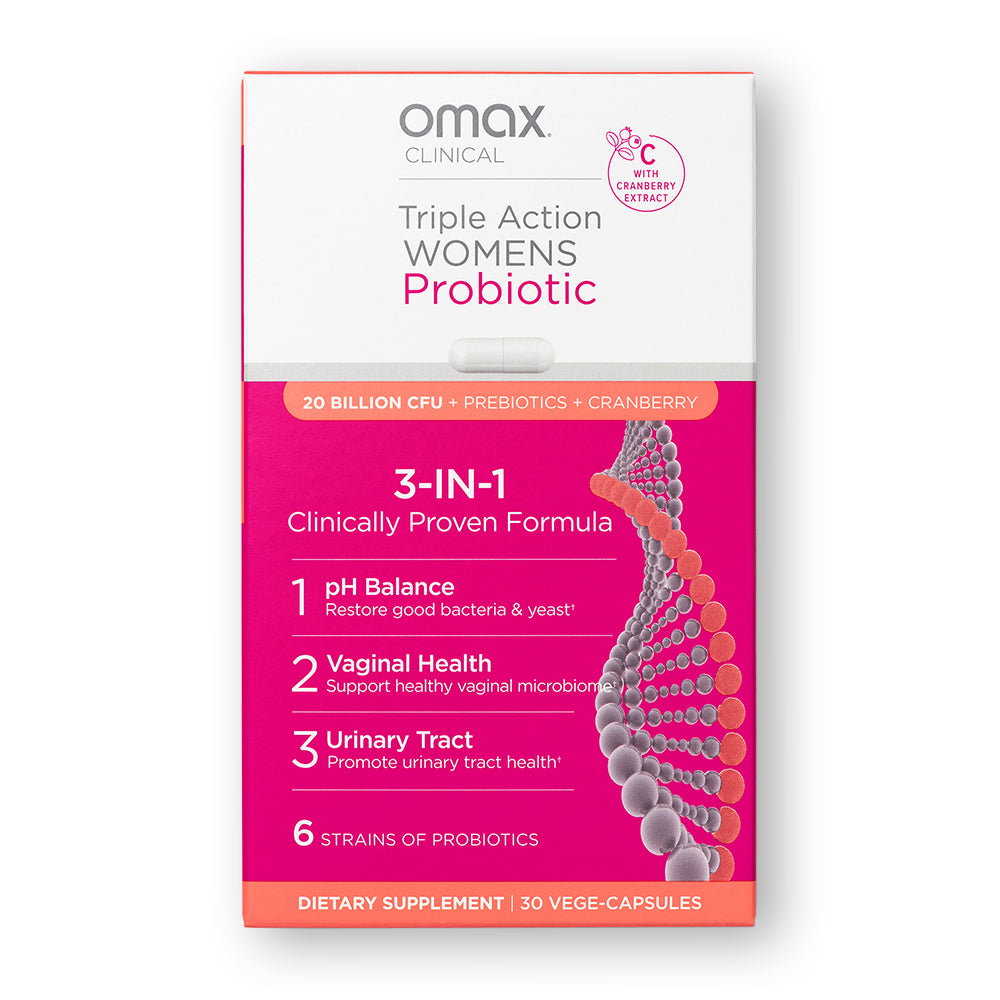
When it comes to balancing pH, supporting your urinary tract and keeping your vaginal health in perfect tact, there are few brands we like more than Omax. This probiotic offers a generous 20 billion CFUs, which is perfect for maintaining general health and wellbeing.
If you find you get a bit of an odor around that time of the month, it could mean a slight imbalance and that your body just needs a little bit of additional probiotic support. This is the perfect supplement to add to your daily routine, and it contains six potent probiotic strains, including Lactobacillus and Bifidobacterium that we explored earlier.
The capsules are vegan, dairy-free, gluten-free, soy-free and non-GMO.
Best Probiotics for Yeast Infection
Doctor’s Pick FEM PRO Women’s Probiotic

The first thing you’ll see when you enter the Doctor’s Pick website, is that their formula is proudly based on 187 clinical trials. This vaginal supplement is potent, and offers an astounding 59.5 billion CFUs per dose.
It goes without saying then that yeast infections are generally no match for this heavy of a treatment. Over the counter probiotics cannot outright claim their abilities against conditions like candida or BV, but all it takes is a brief skim through the product reviews to learn that people around the world have enjoyed rapid healing thanks to products just like this one.
30 capsules gives you a one month supply, but buying in bulk (and subscribing) gets you a reduced rate and major savings.
Best Probiotics for Bacterial Vaginosis
Vitamin Bounty Women’s Pro-Daily Probiotic
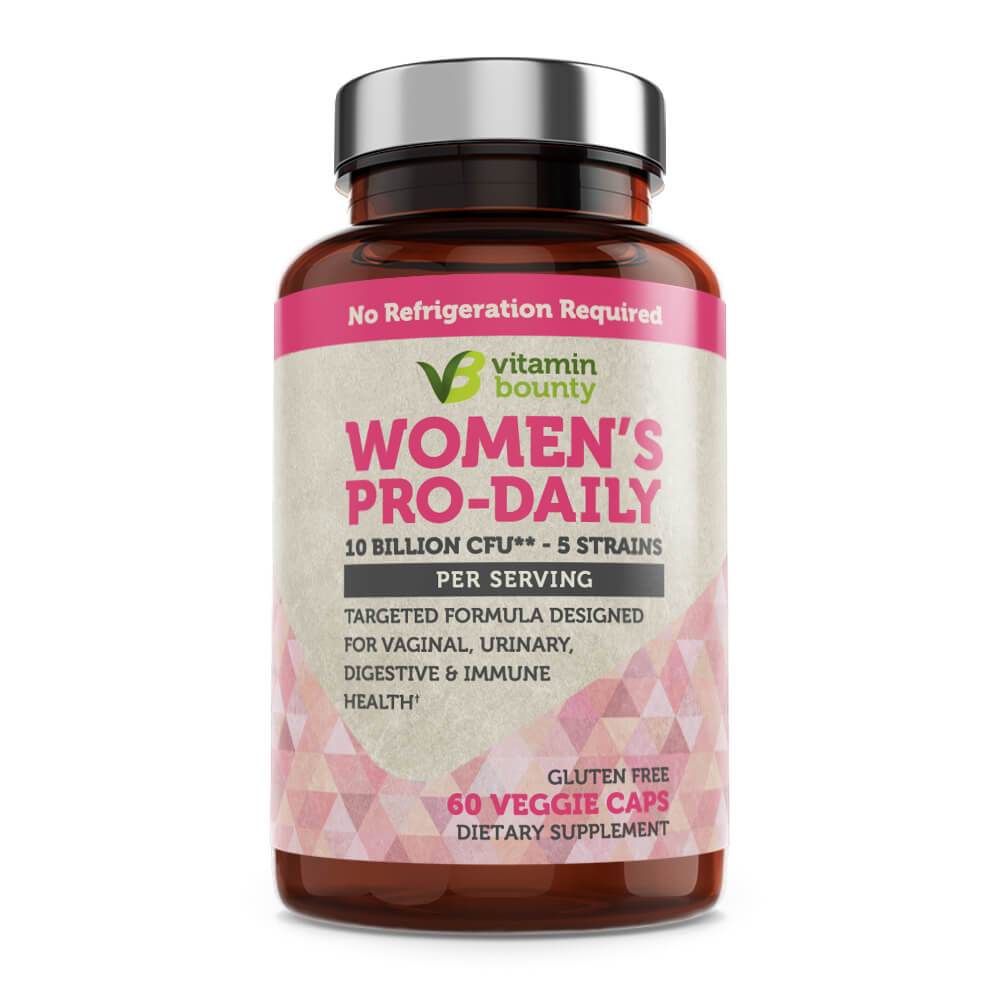
Known for being one of the best probiotics for BV prevention, this formula by Vitamin Bounty will do what it takes to keep that dreaded BV at bay. Giving your body a daily dose of 10 billion CFUs means that your colonies will remain intact, even when your immune system is slightly compromised.
With 5 probiotic strains in each capsule, warding off infections is what this probiotic does best. The capsules are plant based, gluten, dairy and GMO free, and certified under good manufacturing practices. You may also find relief from chronic bloating and cramps as you incorporate this product into your daily routine.
Where to Get Vaginal Probiotics
The best place to get vaginal probiotics will always be online. The reason being that this is the only place where you can buy the top end products that have strains of 10 billion or more probiotic colonies. The probiotics that you can buy in conventional health shops tend to be maximum 5 billion or less, with most of them falling in the 2 billion range.
Taking a 2 billion strain probiotic is better than taking no probiotic at all, sure. However, it’s only around the 10 to 20 billion marks where the real impact is made in the body.
Did You Enjoy This Article?
If you enjoyed this article, you might also like our other articles about health care such as How to Detox Skin from Inside Out and Best Vitamins and Supplements for Bloating.

